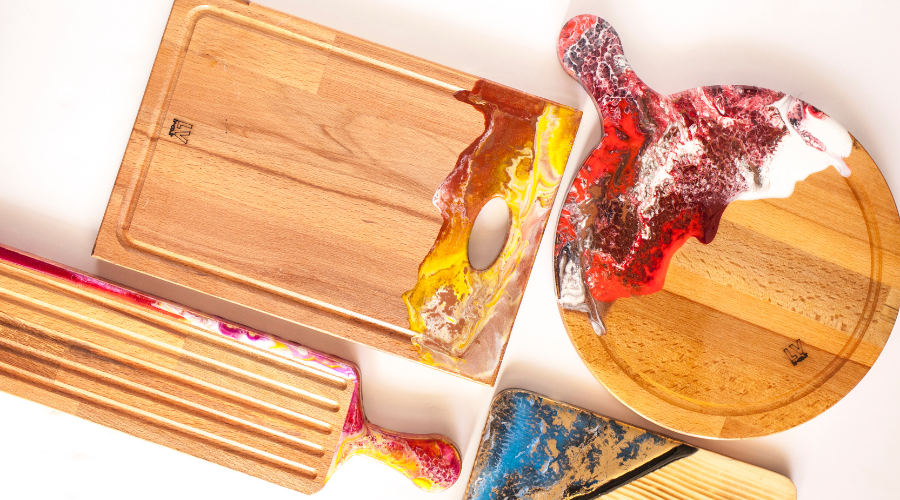Foam Resin vs. Traditional Fillers: Which Is Better for Your Project?
- qinglongdatech
- May 9
- 4 min read

When you're in the planning stages of a construction, furniture, marine, or insulation project, one of the most crucial decisions you'll face is what kind of filler material to use. Should you go with traditional fillers that have been around for decades? Or should you explore modern innovations like foam resin? The choice can impact everything, from cost and durability to environmental impact and ease of application. With so many options available in the market, it's no surprise that people are turning to Foam Resin manufacturer solutions for their versatility and performance. But how do they really compare?
In this comprehensive guide, we'll break down the differences between foam resin and traditional fillers, so you can make the best decision for your project.
Understanding Foam Resin
Foam resin is a lightweight, expandable material made from various polymers that can be injected or poured into molds or cavities. Once it cures, it forms a solid yet lightweight structure that offers impressive strength and durability. It's frequently used in construction, insulation, furniture manufacturing, and even in the marine industry due to its buoyancy.
What makes foam resin so appealing is its ability to fill complex voids, provide excellent thermal and acoustic insulation, and remain resistant to moisture and chemicals. These characteristics make it a go-to choice for many modern applications.
What Are Traditional Fillers?
Traditional fillers are materials that have been used historically to fill gaps, reinforce structures, or add volume to various products. These include materials like:
Wood filler
Spackle
Plaster
Putty
Fiberglass
Epoxy with additives
These materials are tried and tested, with varying degrees of success depending on the application. While they've stood the test of time, they also come with limitations, especially when compared to newer, more advanced options like foam resin.
Key Comparison: Foam Resin vs. Traditional Fillers
Let's break this down into critical aspects to help you make a more informed choice.
1. Weight and Volume Expansion
Foam Resin:
Extremely lightweight
Expands to fill gaps perfectly
Reduces the amount of material needed
Traditional Fillers:
Generally heavier
Do not expand
May require multiple applications
Verdict: Foam resin wins in applications where weight is a concern, especially in boats, aircraft, and insulated panels.
2. Strength and Durability
Foam Resin:
Offers good compressive strength
Resistant to impact, moisture, and some chemicals
Long-lasting in harsh environments
Traditional Fillers:
Some offer high strength (e.g., epoxy fillers)
Susceptible to cracking or shrinking over time
Often requires sealing or coating
Verdict: While both can be strong, foam resin typically holds up better in tough environments over time.
3. Application and Ease of Use
Foam Resin:
Requires careful handling (mixing and curing)
Can be messy if not managed properly
Needs protective gear
Traditional Fillers:
Generally easier to apply with basic tools
Readily available in pre-mixed forms
No special equipment needed
Verdict: Traditional fillers win on simplicity, but foam resin isn't far behind for users with a bit of experience.

4. Versatility and Use Cases
Foam Resin:
Great for insulation, buoyancy, and gap filling
Suitable for large, irregular spaces
Used in both indoor and outdoor settings
Traditional Fillers:
More suitable for cosmetic fixes (e.g., dents, nail holes)
Better for fine detail and sanding
Ideal for woodworking and drywalls
Verdict: Choose foam resin for structural or insulating tasks; go with traditional fillers for cosmetic or minor repairs.
5. Environmental Impact
Foam Resin:
Some formulations are environmentally friendly
Others may off-gas or contain harmful chemicals
It can be recyclable depending on the type
Traditional Fillers:
Varies greatly depending on the material
Generally not recyclable
Often emit VOCs (Volatile Organic Compounds)
Verdict: It's a tie here; both have green and non-green versions. Always check the product specifications.
6. Cost and Availability
Foam Resin:
More expensive upfront
Offers long-term value due to durability
May require purchasing from specialized suppliers
Traditional Fillers:
Cheap and readily available
Widely stocked at hardware stores
Lower long-term value in high-performance projects
Verdict: Foam resin is pricier, but you get what you pay for, especially in high-demand applications.
When to Choose Foam Resin Over Traditional Fillers
You should lean toward foam resin when:
You're filling large, irregular voids
You need thermal or sound insulation
The application involves moisture or chemical exposure
Weight reduction is crucial (e.g., marine, aerospace)
You want a long-lasting, reliable filler
On the flip side, traditional fillers still shine when:
You're fixing small cracks or surface imperfections
The job requires sanding or shaping
You need a low-cost, quick fix
The filler will be painted or finished later
Expert Tip: Combine Both When Needed
There's no rule that says you must choose one or the other exclusively. Many professionals use foam resin for the core filling and traditional fillers for surface smoothing. This hybrid approach allows for structural integrity with a polished finish.
Conclusion
Choosing between foam resin and traditional fillers depends on the specific needs of your project. If you're aiming for durability, insulation, moisture resistance, or weight reduction, foam resin stands out as the better option. For aesthetic touch-ups or small surface repairs, traditional fillers still hold their ground.
Ultimately, it's not about which is universally better—it's about which is better for your unique project needs. And with so many options out there, sourcing your materials from a reliable manufacturer of Foam Resin can make all the difference in the end result.
FAQs
Q1: Can foam resin be sanded or painted like traditional fillers?
Yes, but it depends on the type of foam resin. Some high-density foams can be sanded and painted after curing, while low-density foams may not hold shape well.
Q2: Is foam resin waterproof?
Many foam resins, especially closed-cell types, are highly waterproof and sealed against moisture, making them ideal for marine or bathroom applications.
Q3: How long does foam resin take to cure?
Curing time varies by product. Some fast-curing foams harden within minutes, while others may take several hours. Always refer to the manufacturer's guidelines.
Q4: Are there eco-friendly foam resins available?
Yes, many manufacturers now offer green foam resins made from soy-based or recycled materials. These options reduce environmental impact.
Q5: Which filler is best for heavy-duty outdoor use?
Foam resin is often preferred for heavy-duty outdoor projects due to its resistance to weather, water, and UV exposure.







Comments